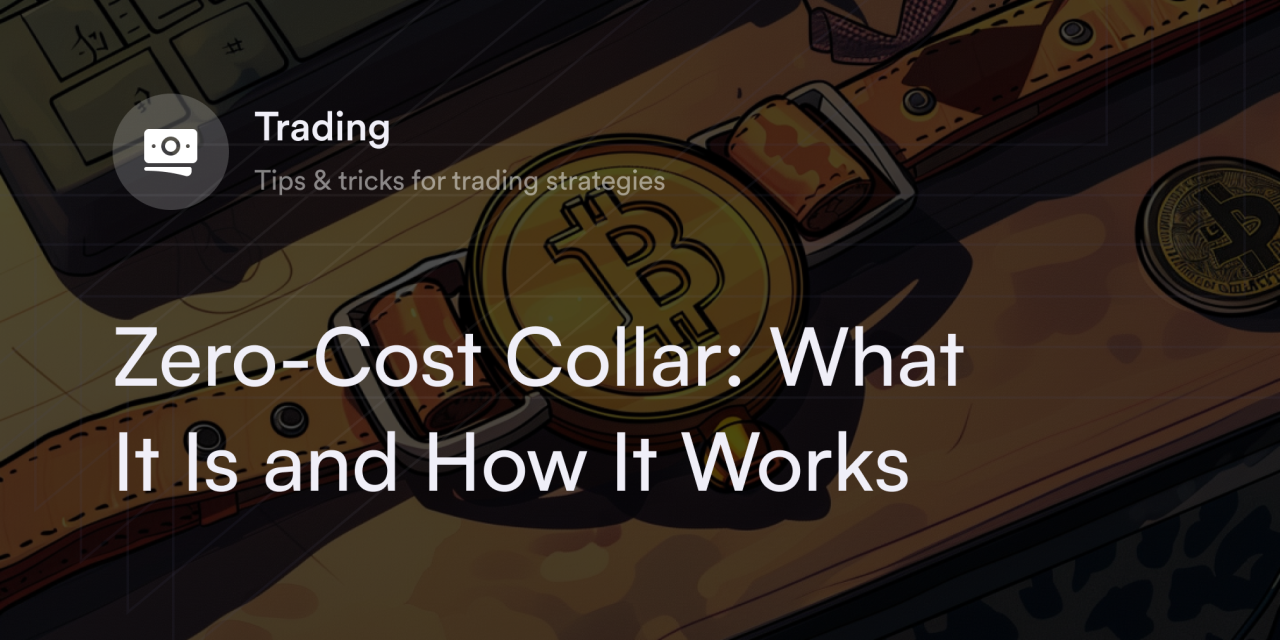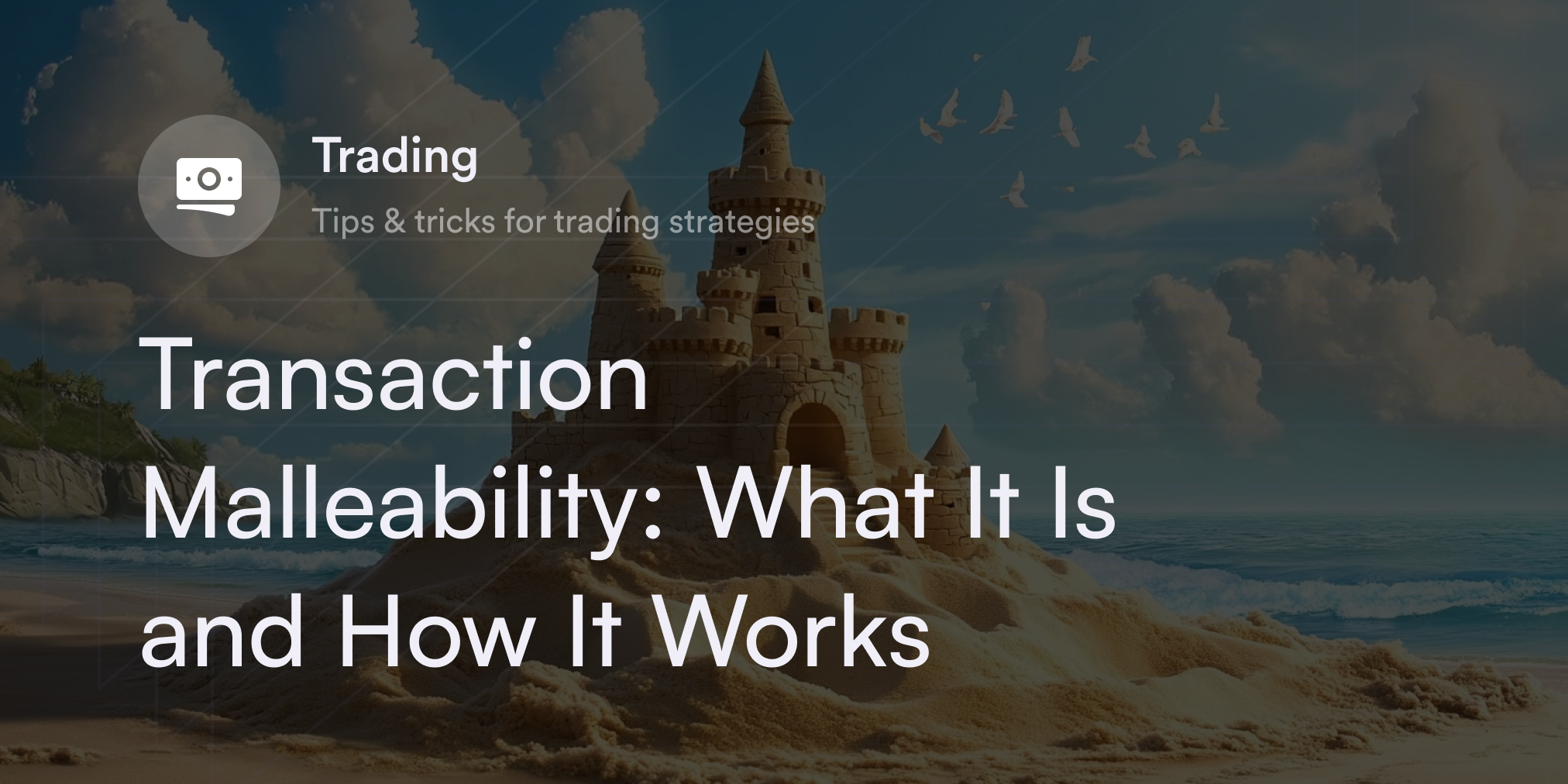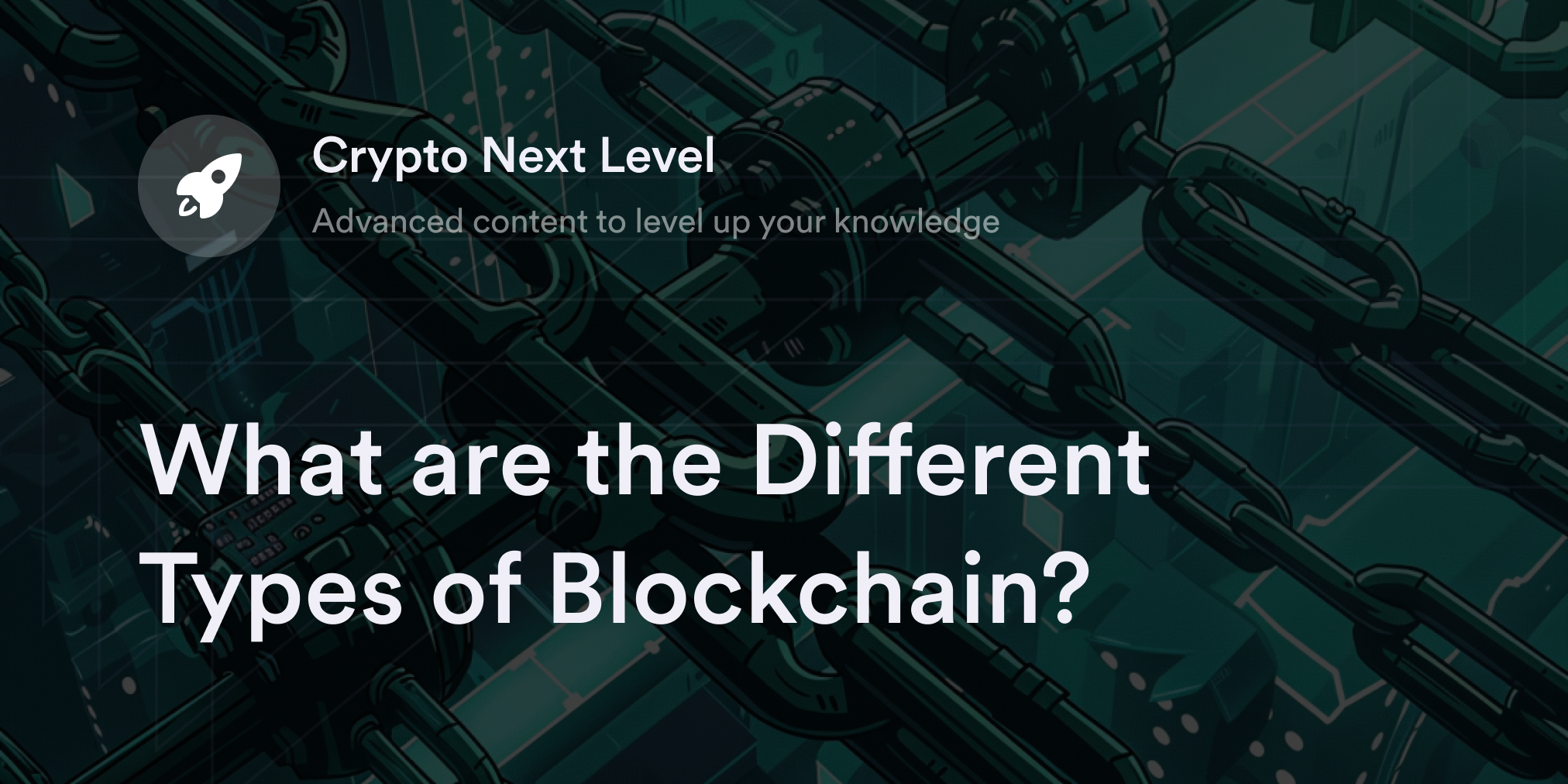


Crypto trading often requires risk management strategies that don’t sacrifice potential gains. Enter the zero-cost collar strategy, a tactical approach involving simultaneous execution of two options trades.
A financial collar caps potential profits but offers a balanced compromise, providing downside protection in the notorious crypto market.
In this guide, we’ll discuss the full details of the zero-cost collar options strategy, including how it works, its benefits and limitations, and an example to illustrate the concept.
What is a zero-cost collar in crypto, and how does it work?
A zero-cost collar is a financial strategy used in options trading. It operates on the same principles in cryptocurrency as in traditional financial markets, but it's applied to digital assets like Bitcoin (BTC) and Ethereum (ETH).
In cryptocurrency trading, a zero-cost collar involves:
Buying a put option: This contract gives the holder the right, but not the obligation, to sell a specified amount of a cryptocurrency at a predetermined price (aka strike price) within a set time frame. This put option is a hedge against the decline in the crypto’s price.
Selling a call option: Concurrently, the trader sells a call option on the same cryptocurrency. This call option grants the buyer the right, but not the obligation, to purchase the cryptocurrency at a certain price within a certain period. The premium from selling this call option helps finance the put option’s purchase.
The zero-cost aspect of the collar comes from the arrangement where the income earned from selling the call option offsets the cost of buying the put option. This strategy allows traders to protect their crypto holdings against downside risk without an upfront cost. However, it also limits the upside potential, as any gains beyond the call option’s strike price will accrue to the call’s buyer, not to the cryptocurrency’s holder.
Example of a zero-cost collar strategy
Now that we’ve established the significance of options and puts spread in a collar strategy, let’s take a look at a hypothetical example.
Imagine a trader owns one Bitcoin, which currently trades at $40,000. They’re concerned about potential short-term downside risk due to market volatility, but they also don't want to sell the crypto. To hedge their position without incurring additional costs, they implement a zero-cost collar strategy.
Step 1: Buying a put option
They buy a put option for one BTC with a strike price of $35,000, expiring in three months. This put option will allow them to sell their Bitcoin at $35,000 regardless of how low the market price may fall.
The cost of this put option (aka the premium) is, let's say, $2,000.
Step 2: Selling a call option
To finance the put option’s purchase, they sell a call option on the same one BTC with a strike price of $45,000, also expiring in three months.
By selling this call option, they receive a premium of $2,000, which offsets the cost of buying the put option, making this a zero-cost strategy.
Possible outcomes
Bitcoin’s price falls below $35,000: If BTC drops to $30,000, for example, they can exercise the put option and sell BTC for $35,000, protecting themselves from a further decrease in value.
Bitcoin’s price rises above $45,000: Suppose BTC rises to $50,000. The buyer of the trader’s call option can exercise their right to buy BTC at $45,000. Although the trader will miss out on the extra $5,000 gain, they’ll benefit from the increase from $40,000 to $45,000.
Bitcoin’s price stays between $35,000 and $45,000: If BTC stays within this range until the expiration of the options, both options will expire worthless. The trader would neither make nor lose money from the options, and they still hold their 1 BTC, which is now worth whatever the current market price is.
Overall, the trader will effectively hedge their Bitcoin holding against significant downside risk without incurring upfront costs, but they cap their upside potential. If BTC skyrockets well above $45,000, they’re committed to selling at only $45,000.
Benefits of zero-cost options strategy
The costless collar approach helps manage risk in the unpredictable crypto market. But that’s not all. Here are the key benefits of using a zero-cost option strategy in crypto trading:
No upfront cost
As the name suggests, the zero-cost nature of the strategy means that the premium received from selling the call option offsets the cost of buying the put option. This allows for hedging without additional expenditure.
Hedging against downside risk
Zero-cost collar protects against a decline in the cryptocurrency's value. By buying put options, traders can set a floor on the potential losses they might face if the market moves unfavorably.
Upside potential maintenance
Although the strategy caps the maximum gain (due to the sold call option), it still allows traders to benefit from some upward movements in the market up to the call option's strike price.
Increased flexibility and customization
With a zero-cost collar strategy, traders can tailor the strike prices of the call and put options per their risk tolerance and market expectations. This flexibility is particularly beneficial in the volatile crypto market.
Reduced emotional trading decisions
By establishing a clear strategy with predetermined price levels for potential selling and buying, zero-cost collar helps traders avoid making impulsive decisions based on market fluctuations.
Strategic exit and entry points
The strategy can be used to set strategic exit and entry points for a position in a cryptocurrency, helping traders better plan their trading strategies.
Disadvantages of zero-cost collar strategy
While the zero-cost collar strategy offers several benefits in managing risks, understanding its potential drawbacks is equally important. This strategy can protect against downside risk but comes with certain trade-offs and complexities. Below are the key disadvantages of employing a zero-cost collar strategy in crypto trading:
Capped upside potential
Zero-cost collar limits potential profits. When traders sell a call option, they agree to sell their cryptocurrency at a certain price, meaning if the market price soars above this level, they miss out on these additional gains.
High learning curve
Options trading, by nature, is more complex than just buying and selling assets. It requires a good understanding of how collar options work, which might be challenging for less experienced traders.
Opportunity cost
Zero-cost collar can lead to a scenario where the market doesn't move as expected, and both options expire worthless. In such cases, the opportunity cost of not being able to participate fully in favorable market movements can be a significant drawback.
Adjustment challenges
Adjusting a zero-cost collar in response to market changes can be complex and might incur additional transaction costs, impacting the strategy’s overall effectiveness.
Risk of early assignment
In the case of American-style options, there's always a risk of early assignment with the sold call options, which can disrupt a trader’s strategy.
Dependent on market conditions
A zero-cost collar strategy heavily depends on market conditions. In a less volatile market, the benefits of this strategy might not justify its costs and limitations.
Boost your technical know-how with dYdX Academy
Trading cryptocurrencies like Bitcoin and Ethereum requires not only a crypto wallet and an exchange but also knowledge and tools to make informed decisions. Head to dYdX Academy, our resource library that houses guides on all things blockchain.
dYdX also offers eligible traders access to perpetual contracts through our premier decentralized platform. For the details on our platform and our Cosmos-based dYdX Chain, visit our official blog, and eligible traders can start trading on dYdX today.
Disclosures
The content of this article (the “Article”) is provided for general informational purposes only. Reference to any specific strategy, technique, product, service, or entity does not constitute an endorsement or recommendation by dYdX Trading Inc., or any affiliate, agent, or representative thereof (“dYdX”). Use of strategies, techniques, products or services referenced in this Article may involve material risks, including the risk of financial losses arising from the volatility, operational loss, or nonconsensual liquidation of digital assets. The content of this Article does not constitute, and should not be considered, construed, or relied upon as, financial advice, legal advice, tax advice, investment advice, or advice of any other nature; and the content of this Article is not an offer, solicitation or call to action to make any investment, or purchase any crypto asset, of any kind. dYdX makes no representation, assurance or guarantee as to the accuracy, completeness, timeliness, suitability, or validity of any information in this Article or any third-party website that may be linked to it. You are solely responsible for conducting independent research, performing due diligence, and/or seeking advice from a professional advisor prior to taking any financial, tax, legal, or investment action.
You may only use the dYdX Services in compliance with the dYdX Terms of Use available here, including the geographic restrictions therein.
Any applicable sponsorship in connection with this Article will be disclosed, and any reference to a sponsor in this Article is for disclosure purposes, or informational in nature, and in any event is not a call to action to make an investment, acquire a service or product, or purchase crypto assets. This Article does not offer the purchase or sale of any financial instruments or related services.
By accessing this Article and taking any action in connection with the information contained in this Article, you agree that dYdX is not responsible, directly or indirectly, for any errors, omissions, or delays related to this Article, or any damage, injury, or loss incurred in connection with use of or reliance on the content of this Article, including any specific strategy, technique, product, service, or entity that may be referenced in the Article.







